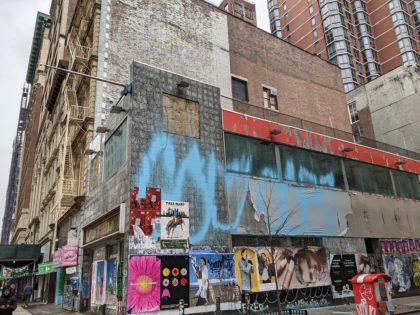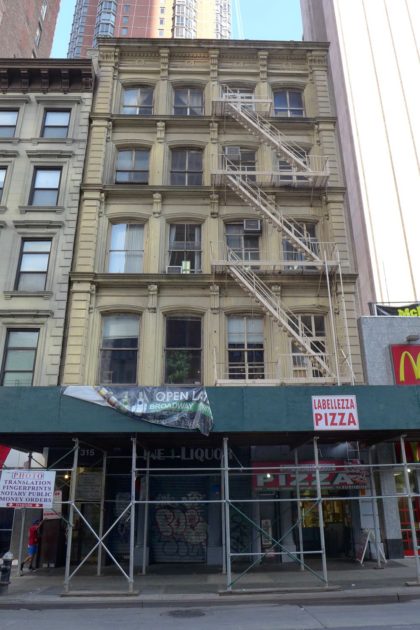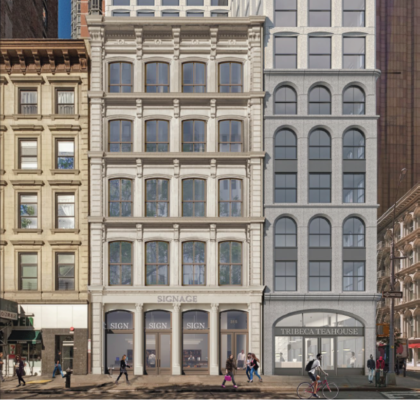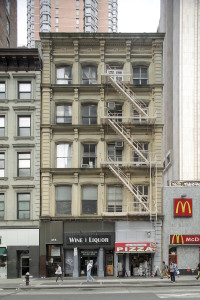“2 Thomas” on Broadway is for sale
Thanks to G. for sending this listing: the lot at the southwest corner of Thomas and Broadway — the real eyesore that includes the former McDonald’s and a city landmark “commercial palace” that once housed Hagstrom Maps — is for sale. That’s a bit of a disappointment, since I really hoped that United American Land, which put a development proposal through the Landmarks Commission, had moved forward with its plan for that sad corner. But hopefully this generates some action.
They are calling it 2 Thomas, but the building is actually 315-317 Broadway, a 6,833 square foot lot on the southwest corner of Broadway and Thomas. The five-story cast iron and marble structure at 315 Broadway, the southern side of the lot, is a city landmark since 2016 (I included an excerpt from the designation report below).
(United American Land also owns 319 Broadway across the street; 415 Broadway, the deco bank building on the southwest corner of Canal; and is currently developing 277 Canal.)
The entire project has already received approval from the Landmarks Commission in 2o20, back when the plans included preserving 315 Broadway and adding a 20-story building behind it, and then building a 14-story structure on the corner. The site, with an inclusionary housing bonus, can have 81,000 square feet.
The 315 Broadway Building is palazzo inspired commercial store and loft building of the type that once lined Broadway and shaped the streetscapes of antebellum New York. Constructed as a speculative investment by the retired linen merchant Thomas Suffern in early 1861, 315 Broadway is a fine example of the commercial palaces that were built in the 1850s and 1860s throughout the wholesale dry goods district now known as Tribeca.
315 Broadway is distinguished by its structural clarity, inventive detailing, and ornament. The five-story building features a marble façade with rusticated corner piers and bracketed cornices, engaged cast iron columns on pedestal bases, and a cast iron storefront that is currently partially concealed. In Manhattan, the palazzo-inspired store and loft was first brought to New York by architects Joseph Trench and John Butler Snook in the A.T. Stewart Store (1845-1846), an instant attraction and enormous commercial success that set a precedent for stone-clad stores and lofts throughout Tribeca.
The Italian Renaissance palazzo was thought to be a particularly appropriate model for commercial buildings because of its associations with merchant princes. Few of these commercial palaces still exist on Broadway south of Franklin Street. 315 Broadway has been leased by dozens of tenants since its construction, including Hartley & Graham Arms and Ammunition and its subsidiary, Remington Arms Company, from 1892-1912, and Hagstrom Company, Inc., a cartography and publishing firm that designed and printed the official New York City subway map during its tenancy, from 1943-1956.

















This is disappointing, as the proposed redevelopment plan was very interesting. Hopefully this corner’s eyesore will soon disappear and be replaced by something appropriate for Tribeca.
By the way, the A.T. Stewart Store mentioned is our current 280 Broadway, a building that has undergone remarkable changes and repurposing since its construction.